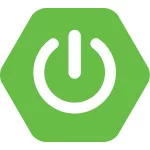Exploring Google Cloud Bigtable
Google Cloud Bigtable is a fully managed, highly scalable NoSQL database service designed for large analytical and operational workloads. Built on the powerful Apache HBase open-source Bigtable implementation, Google Cloud Bigtable is optimized for performance and reliability, making it an excellent choice for applications that require high-throughput and low-latency data access.
1.1 Key Features
- Scalability: Bigtable can scale horizontally to handle massive amounts of data and traffic, making it suitable for applications with rapidly growing workloads.
- High Performance: It provides low-latency and high-throughput access to data, making it ideal for real-time analytics and time-sensitive applications.
- Automatic Scaling: Bigtable can automatically adjust the number of nodes based on the volume of incoming data, ensuring optimal performance without manual intervention.
- Integration with BigQuery: Google Cloud Bigtable seamlessly integrates with BigQuery, Google’s serverless data warehouse, allowing users to analyze data stored in Bigtable using SQL queries.
- Security and Compliance: It offers robust security features, including encryption at rest and in transit, as well as Identity and Access Management (IAM) controls, ensuring data integrity and compliance with regulatory requirements.
1.2 Use Cases
Google Cloud Bigtable is suitable for various use cases, including:
- IoT Applications: With its ability to handle a massive volume of data and provide low-latency access, Bigtable is ideal for IoT applications that generate a continuous stream of data.
- Time Series Data: Applications dealing with time-series data, such as financial trading platforms and monitoring systems, can benefit from the high-performance capabilities of Bigtable.
- Ad Tech: Online advertising platforms often require quick and efficient access to large datasets, making Bigtable a great fit for storing and retrieving ad-related information.
- Analytics: Bigtable integrates seamlessly with Google Cloud’s analytics services, making it a solid choice for running real-time analytics on large datasets.
1.3 Getting Started with Google Cloud Bigtable
To start using Google Cloud Bigtable, you need to create a Bigtable instance and configure your table schema. Google Cloud provides comprehensive documentation and tutorials to guide you through the setup process. Here’s a basic example of creating a table using the Bigtable CLI:
1 2 3 4 5 6 | gcloud bigtable instances create [INSTANCE_ID] \--cluster=[CLUSTER_ID] \--cluster-zone=[CLUSTER_ZONE] \--cluster-num-nodes=[NUM_NODES]cbt -instance=[INSTANCE_ID] createtable [TABLE_NAME] family=[COLUMN_FAMILY] |
This example creates a Bigtable instance with a specified cluster and then creates a table with a specified column family. Once your table is set up, you can start writing and querying data using the provided APIs and client libraries.
1.4 Comparison with AWS and Azure Alternatives
| Feature | Google Cloud Bigtable | AWS DynamoDB | Azure Cosmos DB |
|---|---|---|---|
| Database Type | Wide-column store | Key-value and Document store | Multi-model (supports multiple data models) |
| Scalability | Horizontally scalable with automatic scaling | Horizontally scalable with auto-scaling | Global distribution with multi-region writes |
| Performance | High throughput and low-latency access | Highly performant with low-latency | Low-latency reads and writes |
| Consistency | Eventual consistency | Strong and eventual consistency models | Multiple consistency models (Strong, Bounded staleness, Session, Eventual) |
| Query Language | HBase API | AWS Query Language (supports SQL-like queries) | SQL-like queries for documents |
| Integration | Integration with BigQuery | Integrated with the AWS ecosystem | Integration with Azure services |
| Pricing | Pay-as-you-go pricing model | Pay-per-request and provisioned throughput options | Provisioned throughput and consumption-based models |
| Use Cases | IoT, Time Series Data, Analytics | Web and mobile applications, Gaming, Ad Tech | Global applications, Real-time operational analytics, IoT |
| Security | Encryption at rest and in transit, IAM controls | Encryption at rest and in transit, Fine-grained access control | Encryption at rest and in transit, Role-based access control |
2. Conclusion
Google Cloud Bigtable offers a powerful and scalable solution for managing large datasets with high-performance and low-latency access. Whether you are dealing with IoT data, time-series data, or analytics workloads, Bigtable can provide the necessary infrastructure to meet your requirements. With seamless integration into the Google Cloud ecosystem, it becomes a compelling choice for organizations looking to harness the benefits of a fully managed NoSQL database service.
Explore Google Cloud Bigtable and unlock the potential for building robust, scalable, and high-performance applications that can handle the demands of modern data-intensive workloads.







